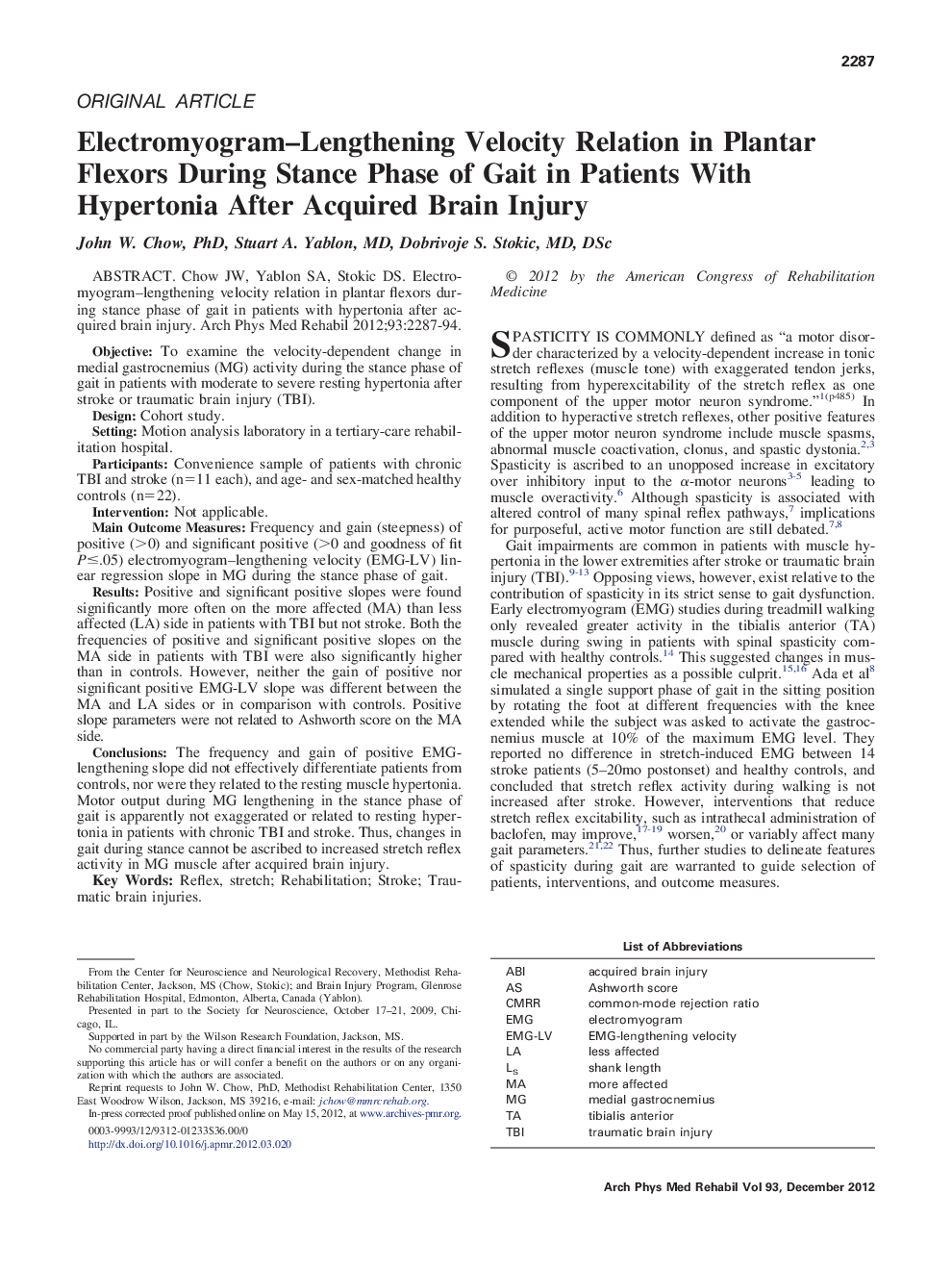| کد مقاله | کد نشریه | سال انتشار | مقاله انگلیسی | نسخه تمام متن |
|---|---|---|---|---|
| 3449296 | 1595718 | 2012 | 8 صفحه PDF | دانلود رایگان |

Chow JW, Yablon SA, Stokic DS. Electromyogram–lengthening velocity relation in plantar flexors during stance phase of gait in patients with hypertonia after acquired brain injury.ObjectiveTo examine the velocity-dependent change in medial gastrocnemius (MG) activity during the stance phase of gait in patients with moderate to severe resting hypertonia after stroke or traumatic brain injury (TBI).DesignCohort study.SettingMotion analysis laboratory in a tertiary-care rehabilitation hospital.ParticipantsConvenience sample of patients with chronic TBI and stroke (n=11 each), and age- and sex-matched healthy controls (n=22).InterventionNot applicable.Main Outcome MeasuresFrequency and gain (steepness) of positive (>0) and significant positive (>0 and goodness of fit P≤.05) electromyogram–lengthening velocity (EMG-LV) linear regression slope in MG during the stance phase of gait.ResultsPositive and significant positive slopes were found significantly more often on the more affected (MA) than less affected (LA) side in patients with TBI but not stroke. Both the frequencies of positive and significant positive slopes on the MA side in patients with TBI were also significantly higher than in controls. However, neither the gain of positive nor significant positive EMG-LV slope was different between the MA and LA sides or in comparison with controls. Positive slope parameters were not related to Ashworth score on the MA side.ConclusionsThe frequency and gain of positive EMG-lengthening slope did not effectively differentiate patients from controls, nor were they related to the resting muscle hypertonia. Motor output during MG lengthening in the stance phase of gait is apparently not exaggerated or related to resting hypertonia in patients with chronic TBI and stroke. Thus, changes in gait during stance cannot be ascribed to increased stretch reflex activity in MG muscle after acquired brain injury.
Journal: Archives of Physical Medicine and Rehabilitation - Volume 93, Issue 12, December 2012, Pages 2287–2294